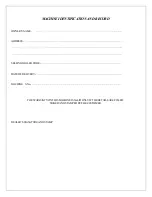
Building Automation Products, Inc., 750 North Royal Avenue, Gays Mills, WI 54631 USA
Tel:+1-608-735-4800 • Fax+1-608-735-4804 • E-mail:[email protected] • Web:www.bapihvac.com
Specifications subject to change without notice.
2 of 4
Installation & Operating Instructions
rev. 08/21/17
28173_ins_CO2_Duct
CO
2
Duct and Rough Service Sensor
Duct Unit Mounting
1. BAPI recommends placing the sensor in the middle of the duct wall,
away from stratified air, to achieve the best reading. The unit should
also be a minimum of 3 duct diameters from an elbow, damper or
other duct restriction.
2. Drill a 1” hole for the aspiration probe.
3. Position the box so that airflow is directly into the holes on one side
of the aspiration probe. There are no upstream or downstream holes,
the air direction is not important.
4. Mount the enclosure to the duct using BAPI recommended #10
screws through a minimum of two of the mounting feet on opposite
corners. A 1/8’ pilot screw hole in the duct makes mounting easier.
Use the enclosure mounting feet to mark the pilot-hole locations.
5. Snug up the screws so that the foam backing is depressed to prevent
air leakage but do not over-tighten or strip the screw threads.
6. Use the provided #6 screws to secure the cover for IP66 rating.
7. BAPI recommends sealing the conduit opening with fiberglass
insulation.
Fig. 5:
Duct unit mounting
Rough Service Unit Mounting
Mount the Rough Service sensor on a solid, non-vibrating surface. Wall mounting in a room should be 3 to 5 feet
above floor level. The Rough Service CO
2
transmitter may be mounted in any orientation. If you are mounting
inside a duct or mixing box, mount with the latch facing into the moving air.
Refer to local codes for further sensor/transmitter installation information. See BAPI’s “Coverage Area” Application
Note for further mounting recommendations. To get to this application note, go to www.bapihvac.com, select
“Resource Library” from the banner. Click on “Application Notes” then scroll down the page to the heading “Air
Quality Related” and chose “Coverage Area and Mounting Recommendations for BAPI Indoor Air Quality Sensors”.
1. BAPI recommends #10 (M5) screws of a type and length suitable for the mounting surface. Four mounting
screws keeps the box from twisting,
twisting may prevent the latch from
operating properly. A pilot-hole
makes mounting easier. Use the
enclosure mounting feet to mark the
pilot-hole locations.
2. Snug up the screws so that the
foam backing is depressed but do
not over-tighten or strip the screw
threads.
3. Place the provided #6 screws into
the holes on each site of the lid
latch to make the cover tamper
resistant.
Fig. 3:
Mounting the Rough Service
sensor to a wall
Fig. 4:
Drill Template,
center 7/8” hole for rear
conduit entry






















